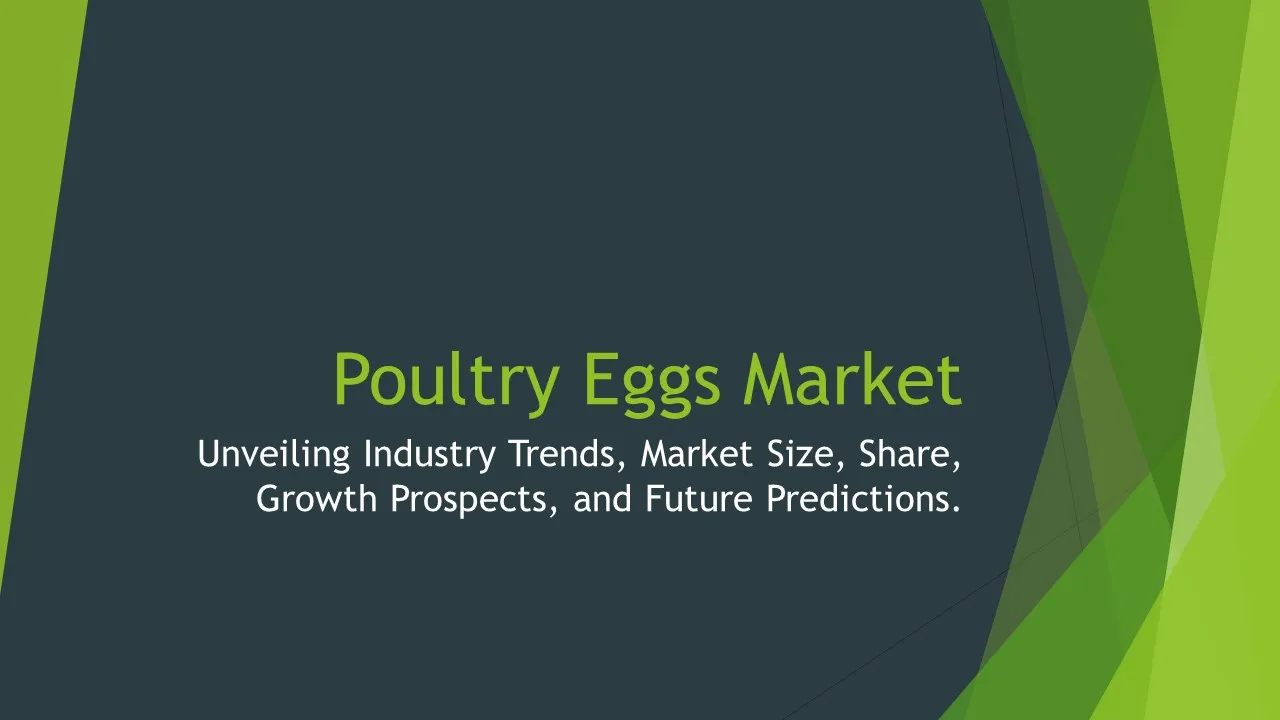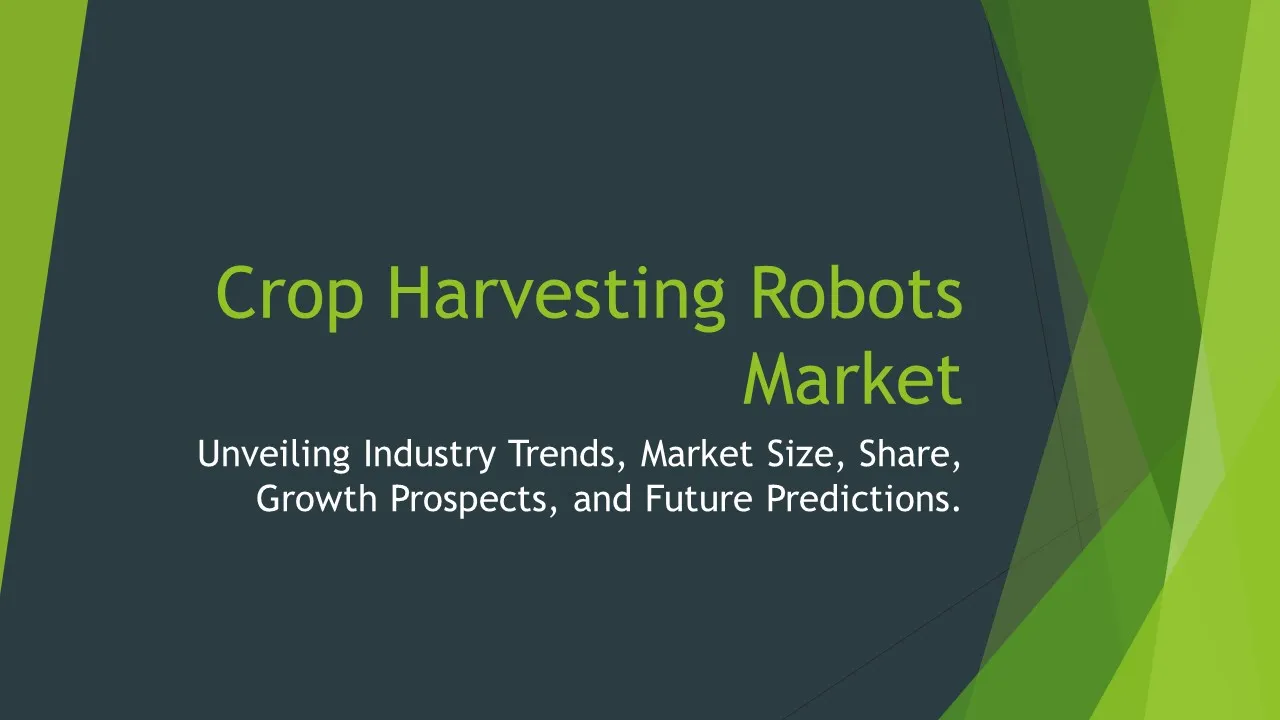Precision Farming Agriculture Device
Precision Farming Agriculture Device Market Segments - by Product Type (GPS/GNSS Systems, Drones, Sensors, Displays, Automated Steering Systems), Application (Yield Monitoring, Field Mapping, Crop Scouting, Variable Rate Technology, Irrigation Management), Distribution Channel (Direct Sales, Indirect Sales), Technology (Remote Sensing, GPS Technology, Variable Rate Technology, Guidance Technology, Telematics), and Region (North America, Europe, Asia Pacific, Latin America, Middle East & Africa) - Global Industry Analysis, Growth, Share, Size, Trends, and Forecast 2025-2035
- Report Preview
- Table Of Content
- Segments
- Methodology
Precision Farming Agriculture Device Market Outlook
The global Precision Farming Agriculture Device Market is projected to reach approximately USD 12 billion by 2035, growing at a Compound Annual Growth Rate (CAGR) of around 13.5% during the forecast period of 2025-2035. This growth is significantly driven by advancements in technology, such as the adoption of Internet of Things (IoT), Artificial Intelligence (AI), and Big Data analytics in agricultural practices. The growing need for enhanced productivity and sustainability in farming is also a major factor propelling the demand for precision farming devices. Furthermore, increasing global population and the accompanying demand for food are compelling farmers to innovate and optimize their operations, leading to higher investments in precision agriculture technologies. The shift from traditional farming methods to digital farming solutions is fundamentally reshaping the agricultural landscape, making it more efficient, resource-saving, and environmentally friendly.
Growth Factor of the Market
The growing emphasis on sustainable agriculture and food security is a primary growth factor for the Precision Farming Agriculture Device Market. Farmers are increasingly recognizing the need to manage their resources efficiently to meet the rising food demand without compromising the environment. Additionally, government initiatives and funding aimed at promoting sustainable farming practices are encouraging the adoption of precision farming technologies. This market is also being boosted by the rising adoption of advanced technologies such as drones and sensors, enabling farmers to gather data and insights that aid in informed decision-making. Moreover, the integration of machine learning and AI into agricultural devices is enhancing their capabilities, providing farmers with predictive analytics for better yield management. The increasing availability and affordability of these technologies make it easier for small and medium-sized enterprises (SMEs) to embrace precision farming techniques, further broadening the market’s reach.
Key Highlights of the Market
- The market is expected to witness a CAGR of 13.5% from 2025 to 2035, indicating strong growth potential.
- North America is anticipated to dominate the market due to early adoption of technology and strong investment in precision agriculture.
- GPS/GNSS systems hold a significant market share, facilitating accurate tracking and navigation for various farming activities.
- The increasing demand for yield monitoring applications is driving the growth of agriculture devices that provide real-time data and analytics.
- Technological advancements in remote sensing and drone technology are expected to revolutionize the precision farming landscape.
By Product Type
GPS/GNSS Systems:
GPS/GNSS systems are pivotal in precision farming as they provide accurate positioning and navigation capabilities. These systems enable farmers to track the location of their equipment and field boundaries with high precision. The integration of GPS technology in agricultural machinery facilitates automated operations, reducing human error and enhancing efficiencies. Farmers use GPS/GNSS systems for various applications, including field mapping and automated steering, allowing for precise planting and harvesting processes. The growing availability of affordable GPS solutions has made these systems accessible to a wide range of agricultural producers, further increasing their adoption in the market. This segment is expected to witness substantial growth as more farmers recognize the benefits of incorporating GPS technology into their operations.
Drones:
Drones have emerged as a game-changing technology in precision farming, offering unique capabilities for monitoring and managing crops. These aerial devices are used for a variety of applications, including crop scouting, field mapping, and surveillance of crop health. Drones equipped with multispectral cameras can capture high-resolution images that provide insights into crop vigor and soil health, enabling farmers to make informed decisions. The utilization of drones allows for timely intervention and optimized resource management, which is essential for maximizing yields. As drone technology continues to evolve, with advancements in battery life, flight time, and data analytics capabilities, their adoption in the agricultural sector is expected to soar, significantly contributing to the overall growth of the precision farming devices market.
Sensors:
Sensors play a crucial role in precision agriculture by providing real-time data on various environmental parameters such as soil moisture, temperature, and nutrient levels. These devices enable farmers to monitor their fields continuously and make data-driven decisions to enhance crop productivity. The increasing adoption of soil and weather sensors is transforming traditional farming practices into data-centric operations, leading to better resource management and improved crop yields. Moreover, advancements in sensor technology, including miniaturization and enhanced connectivity, are enabling more accurate and reliable data collection. The demand for sensor-based solutions is likely to grow as farmers seek innovative ways to optimize inputs and reduce environmental impact.
Displays:
Displays, including monitors and mobile applications, are essential components in the precision farming ecosystem, providing farmers with critical insights and information derived from various data sources. These devices help farmers visualize data in real-time, allowing them to analyze trends and patterns in their agricultural operations. By integrating display technology with other precision farming tools, such as drones and sensors, farmers can make informed decisions regarding irrigation, fertilization, and pest control. The rise of smart farming is driving the demand for advanced display systems that can process large volumes of data and provide actionable insights to farmers. As technology continues to advance, the role of displays in precision agriculture will become increasingly important, enhancing the overall efficiency of farming practices.
Automated Steering Systems:
Automated steering systems represent a significant innovation in precision farming, allowing for precise control of agricultural machinery during field operations. These systems utilize GPS technology to guide tractors and other equipment, reducing operator fatigue and increasing operational efficiency. By enabling hands-free steering, automated systems help farmers achieve more accurate planting, fertilization, and harvesting, ultimately leading to improved crop yields. The growing trend towards automation in agriculture is driving the adoption of automated steering technologies, particularly among large-scale farming operations. As more farmers recognize the benefits of reduced labor costs and enhanced productivity, the demand for automated steering systems is expected to rise, contributing to market growth.
By Application
Yield Monitoring:
Yield monitoring is a critical application of precision farming devices, enabling farmers to collect data on crop yields in real-time. This information helps farmers understand the performance of different crop varieties and identify the optimal planting strategies for future seasons. Yield monitoring systems utilize sensors and GPS technology to track the amount of crop harvested from specific areas of the field, providing valuable insights into yield variability. By analyzing this data, farmers can make informed decisions regarding resource allocation, such as fertilizer and water usage. The growing focus on maximizing yields while minimizing costs is driving the demand for yield monitoring technologies within the precision farming sector.
Field Mapping:
Field mapping is an essential application in precision agriculture, allowing farmers to create accurate maps of their fields for better management. This process involves the use of GPS technology and remote sensing devices to assess soil types, topography, and crop conditions. Field mapping enables farmers to identify areas that require specific inputs, such as fertilizers or irrigation, resulting in more efficient resource utilization. By leveraging field mapping techniques, farmers can also make informed decisions about crop rotation and planting strategies, leading to improved crop health and productivity. As farmers increasingly recognize the importance of data-driven agricultural practices, the demand for field mapping solutions is expected to grow significantly.
Crop Scouting:
Crop scouting is a vital application of precision farming that involves regular monitoring of crops to assess their growth and health. This practice allows farmers to detect potential issues such as pest infestations, diseases, or nutrient deficiencies at an early stage. By integrating technology, such as drones and sensors, into crop scouting activities, farmers can gather real-time data and make timely interventions to protect their crops. The increasing emphasis on integrated pest management and sustainable farming practices is driving the demand for advanced crop scouting solutions. As technology continues to evolve, the effectiveness of crop scouting is expected to improve, resulting in higher overall yields and reduced input costs for farmers.
Variable Rate Technology:
Variable Rate Technology (VRT) is a revolutionary application in the precision farming landscape, enabling farmers to apply inputs such as fertilizers, pesticides, and water at variable rates across their fields. VRT utilizes data from sensors and GPS technology to assess the specific needs of different areas within a field. This targeted approach helps in optimizing resource utilization, reducing waste, and minimizing environmental impacts. The adoption of VRT is on the rise as farmers seek to improve profitability while promoting sustainable practices. As awareness of the benefits of precision farming continues to grow, the demand for variable rate technology solutions is expected to see significant increases over the coming years.
Irrigation Management:
Effective irrigation management is crucial in precision farming, as it directly impacts crop yield and resource conservation. Advanced irrigation management systems utilize sensors, data analytics, and IoT technology to monitor soil moisture levels and weather conditions, allowing farmers to optimize their irrigation schedules. By ensuring that crops receive the right amount of water at the right time, farmers can significantly enhance their overall productivity while conserving water resources. The increasing prevalence of drought conditions and water scarcity issues is pushing the adoption of sophisticated irrigation management solutions. As more farmers recognize the importance of efficient water usage, the demand for precision irrigation technologies is expected to rise, further driving the growth of the precision farming agriculture device market.
By Distribution Channel
Direct Sales:
Direct sales play a pivotal role in the distribution of precision farming devices, allowing manufacturers to engage directly with farmers and provide tailored solutions. This distribution model offers several advantages, including personalized service and immediate access to the latest technology. Through direct sales, companies can better understand customer needs and preferences, enabling them to adapt their offerings accordingly. Additionally, farmers benefit from direct communication with manufacturers, which can lead to improved support and training on product usage. With the growing emphasis on precision agriculture, the direct sales channel is expected to expand as companies seek to build strong relationships with their customers and drive technology adoption.
Indirect Sales:
Indirect sales channels, which encompass distributors, retailers, and online platforms, are also vital in the distribution of precision farming devices. These channels allow manufacturers to reach a broader audience, including those farmers who may not have direct access to specific technologies. Indirect sales partners often provide valuable insights into local market trends and customer preferences, helping companies refine their product offerings. Additionally, the convenience of online platforms enables farmers to research and purchase precision farming devices from the comfort of their homes. As the market continues to evolve, indirect sales channels are expected to play an increasingly important role in facilitating access to precision agriculture technologies for farmers across diverse regions.
By Technology
Remote Sensing:
Remote sensing technology has become an integral part of precision farming, providing farmers with invaluable data on crop health, soil conditions, and environmental factors. By utilizing satellite imagery and aerial data, remote sensing allows for large-scale monitoring of agricultural fields, enabling farmers to assess crop performance and make informed decisions. This technology can detect issues such as nutrient deficiencies and pest infestations early, allowing for timely interventions that can improve crop yields. The growing interest in sustainable agriculture practices is driving the adoption of remote sensing solutions, as farmers seek to optimize their operations while minimizing environmental impact. As the technology continues to advance, remote sensing is expected to play an increasingly prominent role in precision farming.
GPS Technology:
GPS technology serves as the backbone of precision farming, enabling farmers to achieve high levels of accuracy in their operations. By integrating GPS into agricultural machinery, farmers can automate tasks such as planting, fertilizing, and harvesting, reducing labor costs and increasing productivity. GPS systems provide real-time location data, allowing farmers to map their fields accurately and optimize their practices. With advancements in GPS technology, including the introduction of real-time kinematic (RTK) systems, farmers can achieve centimeter-level accuracy, further enhancing the efficiency of their operations. As precision farming continues to grow in importance, the demand for GPS technology is expected to remain robust.
Variable Rate Technology:
Variable Rate Technology (VRT) is revolutionizing precision agriculture through its ability to customize input applications based on specific field conditions. By leveraging data from sensors and GPS systems, VRT enables farmers to apply fertilizers, water, and pesticides at variable rates across their fields, optimizing resource use and improving crop yields. This technology not only helps in maximizing productivity but also reduces environmental impacts by minimizing over-application of inputs. As farmers increasingly embrace sustainable agricultural practices and seek to enhance profitability, the demand for variable rate technology solutions is expected to grow significantly. The continued development of VRT systems is likely to further enhance their effectiveness and attract more users.
Guidance Technology:
Guidance technology is a fundamental aspect of precision farming, facilitating accurate navigation and control of agricultural machinery. This technology enables farmers to conduct field operations with minimal overlap and gaps, ultimately improving efficiency and reducing input costs. Automated guidance systems, including steer-by-wire and assisted steering, allow for hands-free operation, reducing operator fatigue and increasing productivity. As farmers become more aware of the benefits of precision farming, the adoption of guidance technology is expected to rise. With advancements in technology, including the integration of machine learning and AI, guidance systems are becoming more sophisticated, offering improved accuracy and reliability.
Telematics:
Telematics technology is transforming the precision farming landscape by providing farmers with real-time data and insights regarding their equipment and field operations. By integrating telematics systems into agricultural machinery, farmers can monitor performance metrics, track fuel consumption, and assess maintenance needs remotely. This level of insight allows for proactive decision-making and efficient resource management, ultimately leading to improved productivity. As the agricultural industry increasingly relies on data-driven strategies, the demand for telematics solutions is anticipated to grow. The convergence of telematics with other precision farming technologies, such as GPS and sensors, is likely to further enhance the value of these systems for farmers.
By Region
The regional analysis of the Precision Farming Agriculture Device Market reveals diverse growth patterns across different geographical areas. North America currently holds the largest market share, driven by the early adoption of precision agriculture technologies and significant investments in agricultural R&D. The United States, in particular, is leading the charge with robust infrastructure and strong support for advanced farming practices. This region is projected to maintain a CAGR of around 15% during the forecast period, fueled by the increasing awareness of sustainable farming and rising food production demands. Furthermore, the integration of cutting-edge technologies such as AI, IoT, and big data analytics is further enhancing the growth prospects in North America.
Europe follows closely behind North America in terms of market share, with countries like Germany, France, and the UK at the forefront of adopting precision farming technologies. The emphasis on sustainable agricultural practices, regulatory support for environmental conservation, and the need to improve crop yields are key factors contributing to market growth in this region. Asia Pacific is also emerging as a significant market for precision farming, driven by rapid urbanization, growing populations, and the increasing need for food security. As countries like China and India invest heavily in modernizing their agricultural practices, the region is expected to witness substantial growth in the adoption of precision farming devices. Overall, the global market for precision farming agriculture devices is poised for robust growth across various regions, with each area exhibiting unique trends and dynamics.
Opportunities
The Precision Farming Agriculture Device Market presents numerous opportunities for growth, particularly as the demand for food continues to rise on a global scale. One of the most notable opportunities lies in the increasing adoption of precision agriculture among small and medium-sized farms. As technology becomes more affordable and accessible, smaller farms can leverage precision farming devices to maximize yields and optimize resource usage. This trend is further supported by government initiatives and grants aimed at promoting sustainable agricultural practices among smaller producers. As these farmers adopt precision technologies, they can significantly contribute to the overall growth of the market while also improving their competitiveness in the agricultural sector.
Another significant opportunity exists in the integration of artificial intelligence and machine learning into precision farming devices. The incorporation of AI can enhance data analytics capabilities, allowing farmers to gain deeper insights into their operations and make more informed decisions. This technology can help in areas such as predictive analytics, crop monitoring, and automation, leading to more efficient farming practices. The potential for developing advanced algorithms and data-driven solutions represents a lucrative market segment for technology providers. As the agricultural industry continues to embrace digital transformation, companies that focus on integrating AI into precision farming solutions will likely experience substantial growth, positioning themselves as key players in this evolving market.
Threats
Despite the numerous opportunities, the Precision Farming Agriculture Device Market also faces several threats that could hinder growth. One of the main concerns is the high initial investment cost associated with precision farming technologies. Many small-scale farmers may find it challenging to invest in advanced equipment and systems, resulting in a slower adoption rate in certain regions. This financial barrier could limit market penetration, particularly in developing countries where farmers may lack access to capital. Moreover, fluctuations in commodity prices and unpredictable weather conditions can impact farmers' willingness to invest in new technologies, further complicating market growth.
Another significant threat to the precision farming sector is the potential cybersecurity risks associated with the increasing reliance on digital technologies. As more devices become connected through IoT and data analytics frameworks, the vulnerability to cyber-attacks also rises. Farmers may become apprehensive about adopting precision farming technologies if they perceive a threat to their data security and privacy. Additionally, regulatory challenges and compliance requirements related to data protection can pose hurdles for technology providers in the agriculture sector. Addressing these concerns will be crucial for fostering trust among farmers and encouraging them to embrace precision farming solutions.
Competitor Outlook
- Trimble Inc.
- John Deere & Company
- AG Leader Technology
- Climate Corporation
- CNH Industrial N.V.
- Topcon Positioning Systems, Inc.
- DJI Technology Co., Ltd.
- Valmont Industries, Inc.
- Raven Industries, Inc.
- Deere & Company
- SenseFly SA
- Hexagon AB
- AgJunction Inc.
- Fieldin Technologies
- Yara International ASA
The competitive landscape of the Precision Farming Agriculture Device Market is characterized by the presence of both established players and emerging startups. Major companies are investing heavily in research and development to enhance their product offerings and stay ahead of market trends. Firms like Trimble Inc. and John Deere have established themselves as frontrunners in the precision agriculture sector by developing innovative solutions that cater to a wide range of agricultural applications. These companies leverage partnerships and collaborations with technology providers to expand their capabilities and enhance their market presence. Furthermore, they are focusing on integrating advanced technologies such as AI and machine learning into their precision farming devices, creating more value for farmers and driving overall market growth.
In addition to the major players, the market is also witnessing the rise of several innovative startups that are developing specialized precision farming solutions. Companies such as Climate Corporation and AG Leader Technology are gaining traction by offering unique products and services that address specific challenges faced by farmers. These startups are often more agile and can quickly adapt to changing market demands, providing niche solutions that complement the offerings of larger firms. This dynamic environment fosters healthy competition and drives continuous improvement, ultimately benefiting farmers through enhanced productivity and efficiency.
As the Precision Farming Agriculture Device Market continues to evolve, collaboration and strategic partnerships will play a significant role in shaping the industry's future. Companies that invest in building strong relationships with technology providers, agricultural organizations, and research institutions are likely to gain a competitive edge. Additionally, increasing consumer demand for sustainable agricultural practices will compel firms to focus on developing eco-friendly precision farming solutions. As the competitive landscape becomes more challenging, organizations that prioritize innovation, customer engagement, and sustainability will be well-positioned to succeed in the growing precision farming sector.
1 Appendix
- 1.1 List of Tables
- 1.2 List of Figures
2 Introduction
- 2.1 Market Definition
- 2.2 Scope of the Report
- 2.3 Study Assumptions
- 2.4 Base Currency & Forecast Periods
3 Market Dynamics
- 3.1 Market Growth Factors
- 3.2 Economic & Global Events
- 3.3 Innovation Trends
- 3.4 Supply Chain Analysis
4 Consumer Behavior
- 4.1 Market Trends
- 4.2 Pricing Analysis
- 4.3 Buyer Insights
5 Key Player Profiles
- 5.1 Hexagon AB
- 5.1.1 Business Overview
- 5.1.2 Products & Services
- 5.1.3 Financials
- 5.1.4 Recent Developments
- 5.1.5 SWOT Analysis
- 5.2 SenseFly SA
- 5.2.1 Business Overview
- 5.2.2 Products & Services
- 5.2.3 Financials
- 5.2.4 Recent Developments
- 5.2.5 SWOT Analysis
- 5.3 Trimble Inc.
- 5.3.1 Business Overview
- 5.3.2 Products & Services
- 5.3.3 Financials
- 5.3.4 Recent Developments
- 5.3.5 SWOT Analysis
- 5.4 AgJunction Inc.
- 5.4.1 Business Overview
- 5.4.2 Products & Services
- 5.4.3 Financials
- 5.4.4 Recent Developments
- 5.4.5 SWOT Analysis
- 5.5 Deere & Company
- 5.5.1 Business Overview
- 5.5.2 Products & Services
- 5.5.3 Financials
- 5.5.4 Recent Developments
- 5.5.5 SWOT Analysis
- 5.6 CNH Industrial N.V.
- 5.6.1 Business Overview
- 5.6.2 Products & Services
- 5.6.3 Financials
- 5.6.4 Recent Developments
- 5.6.5 SWOT Analysis
- 5.7 Climate Corporation
- 5.7.1 Business Overview
- 5.7.2 Products & Services
- 5.7.3 Financials
- 5.7.4 Recent Developments
- 5.7.5 SWOT Analysis
- 5.8 AG Leader Technology
- 5.8.1 Business Overview
- 5.8.2 Products & Services
- 5.8.3 Financials
- 5.8.4 Recent Developments
- 5.8.5 SWOT Analysis
- 5.9 Fieldin Technologies
- 5.9.1 Business Overview
- 5.9.2 Products & Services
- 5.9.3 Financials
- 5.9.4 Recent Developments
- 5.9.5 SWOT Analysis
- 5.10 John Deere & Company
- 5.10.1 Business Overview
- 5.10.2 Products & Services
- 5.10.3 Financials
- 5.10.4 Recent Developments
- 5.10.5 SWOT Analysis
- 5.11 Raven Industries, Inc.
- 5.11.1 Business Overview
- 5.11.2 Products & Services
- 5.11.3 Financials
- 5.11.4 Recent Developments
- 5.11.5 SWOT Analysis
- 5.12 Yara International ASA
- 5.12.1 Business Overview
- 5.12.2 Products & Services
- 5.12.3 Financials
- 5.12.4 Recent Developments
- 5.12.5 SWOT Analysis
- 5.13 DJI Technology Co., Ltd.
- 5.13.1 Business Overview
- 5.13.2 Products & Services
- 5.13.3 Financials
- 5.13.4 Recent Developments
- 5.13.5 SWOT Analysis
- 5.14 Valmont Industries, Inc.
- 5.14.1 Business Overview
- 5.14.2 Products & Services
- 5.14.3 Financials
- 5.14.4 Recent Developments
- 5.14.5 SWOT Analysis
- 5.15 Topcon Positioning Systems, Inc.
- 5.15.1 Business Overview
- 5.15.2 Products & Services
- 5.15.3 Financials
- 5.15.4 Recent Developments
- 5.15.5 SWOT Analysis
- 5.1 Hexagon AB
6 Market Segmentation
- 6.1 Precision Farming Agriculture Device Market, By Technology
- 6.1.1 Remote Sensing
- 6.1.2 GPS Technology
- 6.1.3 Variable Rate Technology
- 6.1.4 Guidance Technology
- 6.1.5 Telematics
- 6.2 Precision Farming Agriculture Device Market, By Application
- 6.2.1 Yield Monitoring
- 6.2.2 Field Mapping
- 6.2.3 Crop Scouting
- 6.2.4 Variable Rate Technology
- 6.2.5 Irrigation Management
- 6.3 Precision Farming Agriculture Device Market, By Distribution Channel
- 6.3.1 Direct Sales
- 6.3.2 Indirect Sales
- 6.1 Precision Farming Agriculture Device Market, By Technology
7 Competitive Analysis
- 7.1 Key Player Comparison
- 7.2 Market Share Analysis
- 7.3 Investment Trends
- 7.4 SWOT Analysis
8 Research Methodology
- 8.1 Analysis Design
- 8.2 Research Phases
- 8.3 Study Timeline
9 Future Market Outlook
- 9.1 Growth Forecast
- 9.2 Market Evolution
10 Geographical Overview
- 10.1 Europe - Market Analysis
- 10.1.1 By Country
- 10.1.1.1 UK
- 10.1.1.2 France
- 10.1.1.3 Germany
- 10.1.1.4 Spain
- 10.1.1.5 Italy
- 10.1.1 By Country
- 10.2 Asia Pacific - Market Analysis
- 10.2.1 By Country
- 10.2.1.1 India
- 10.2.1.2 China
- 10.2.1.3 Japan
- 10.2.1.4 South Korea
- 10.2.1 By Country
- 10.3 Latin America - Market Analysis
- 10.3.1 By Country
- 10.3.1.1 Brazil
- 10.3.1.2 Argentina
- 10.3.1.3 Mexico
- 10.3.1 By Country
- 10.4 North America - Market Analysis
- 10.4.1 By Country
- 10.4.1.1 USA
- 10.4.1.2 Canada
- 10.4.1 By Country
- 10.5 Middle East & Africa - Market Analysis
- 10.5.1 By Country
- 10.5.1.1 Middle East
- 10.5.1.2 Africa
- 10.5.1 By Country
- 10.6 Precision Farming Agriculture Device Market by Region
- 10.1 Europe - Market Analysis
11 Global Economic Factors
- 11.1 Inflation Impact
- 11.2 Trade Policies
12 Technology & Innovation
- 12.1 Emerging Technologies
- 12.2 AI & Digital Trends
- 12.3 Patent Research
13 Investment & Market Growth
- 13.1 Funding Trends
- 13.2 Future Market Projections
14 Market Overview & Key Insights
- 14.1 Executive Summary
- 14.2 Key Trends
- 14.3 Market Challenges
- 14.4 Regulatory Landscape
Segments Analyzed in the Report
The global Precision Farming Agriculture Device market is categorized based on
By Application
- Yield Monitoring
- Field Mapping
- Crop Scouting
- Variable Rate Technology
- Irrigation Management
By Distribution Channel
- Direct Sales
- Indirect Sales
By Technology
- Remote Sensing
- GPS Technology
- Variable Rate Technology
- Guidance Technology
- Telematics
By Region
- North America
- Europe
- Asia Pacific
- Latin America
- Middle East & Africa
Key Players
- Trimble Inc.
- John Deere & Company
- AG Leader Technology
- Climate Corporation
- CNH Industrial N.V.
- Topcon Positioning Systems, Inc.
- DJI Technology Co., Ltd.
- Valmont Industries, Inc.
- Raven Industries, Inc.
- Deere & Company
- SenseFly SA
- Hexagon AB
- AgJunction Inc.
- Fieldin Technologies
- Yara International ASA
- Publish Date : Jan 20 ,2025
- Report ID : AG-407
- No. Of Pages : 100
- Format : |
- Ratings : 4.5 (110 Reviews)









